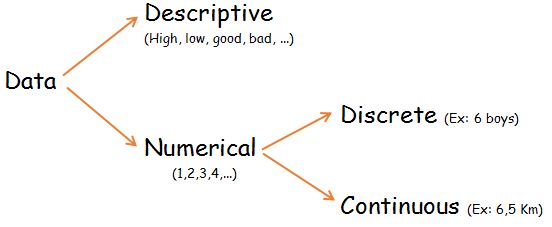Data is defined as the facts & collected for the analysis purpose. Data is divided into qualitative data (descriptive) & quantitative data.

The qualitative data cannot be measured in terms of numbers.
On the other hand, quantitative data is one that contains numerical values and uses range. It is divided into discrete data & continuous data.
Discrete data contains finite values and have nothing in-between. On other hand, continuous data contains data that can be measured, including decimals & fractions.
Table of Contents
Definition of Discrete Data
Discrete data is the type of quantitative data that relies on counts. It contains finite values, so subdivision isn’t possible.
Discrete data only includes values that can only be counted in integers or whole numbers. So they cannot be broken down into decimal or fraction.
Discrete Data can only take certain values
The number of boys in a class is 6. (We can’t have half a boy)
Definition of Continuous Data
Continuous data is the data that can be measured on a scale. It can take any numeric value, within a finite or infinite range of possible value.
Note:
“range” refers to the difference between highest & lowest observation.
The continuous data can be broken down into decimal and fractions ,so it can be subdivided into smaller parts according to the measurement precision.
Continuous Data can take any value (within a range)
A distance: could be any value (within the range of distance such as, Km, m, Cm, … ), not just certain distance.
To Simplify it
Data can be Descriptive or Numerical (numbers).
Numerical Data can be Discrete or Continuous:
Discrete data is counted
Continuous data is measured
